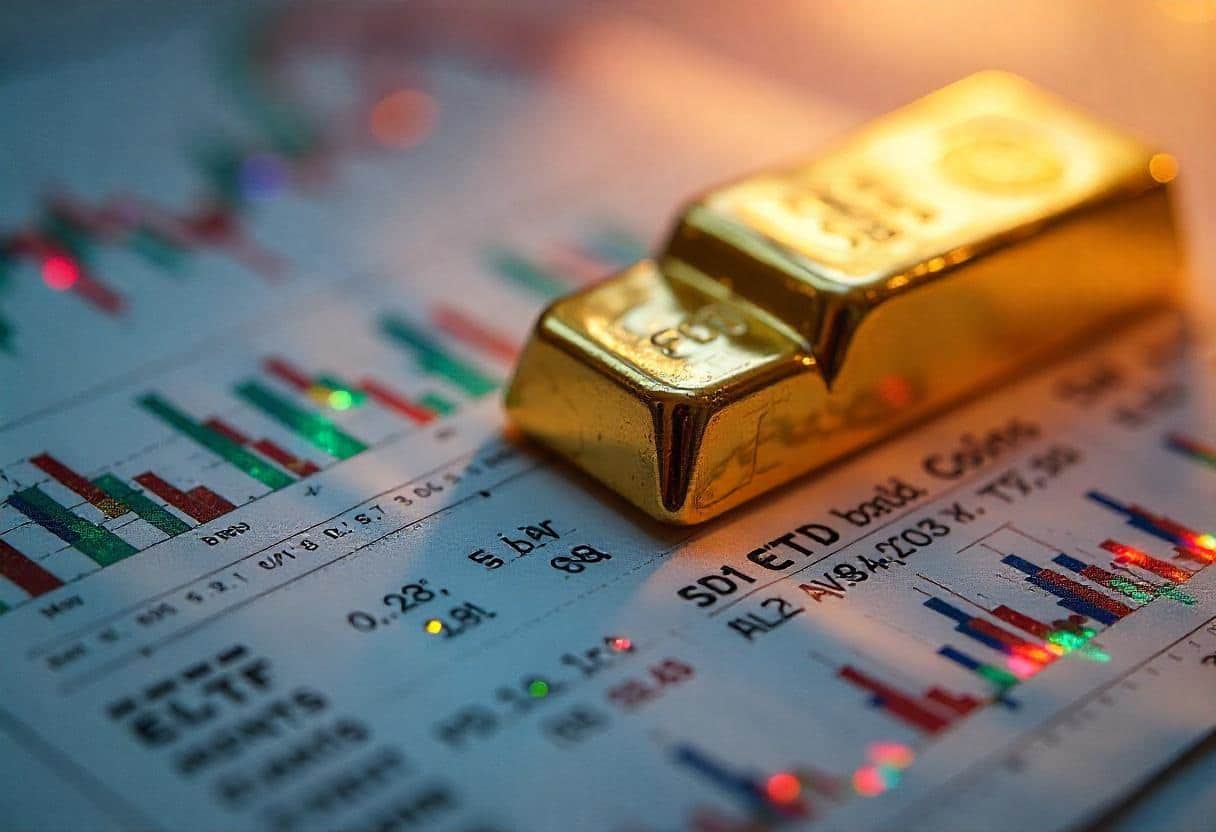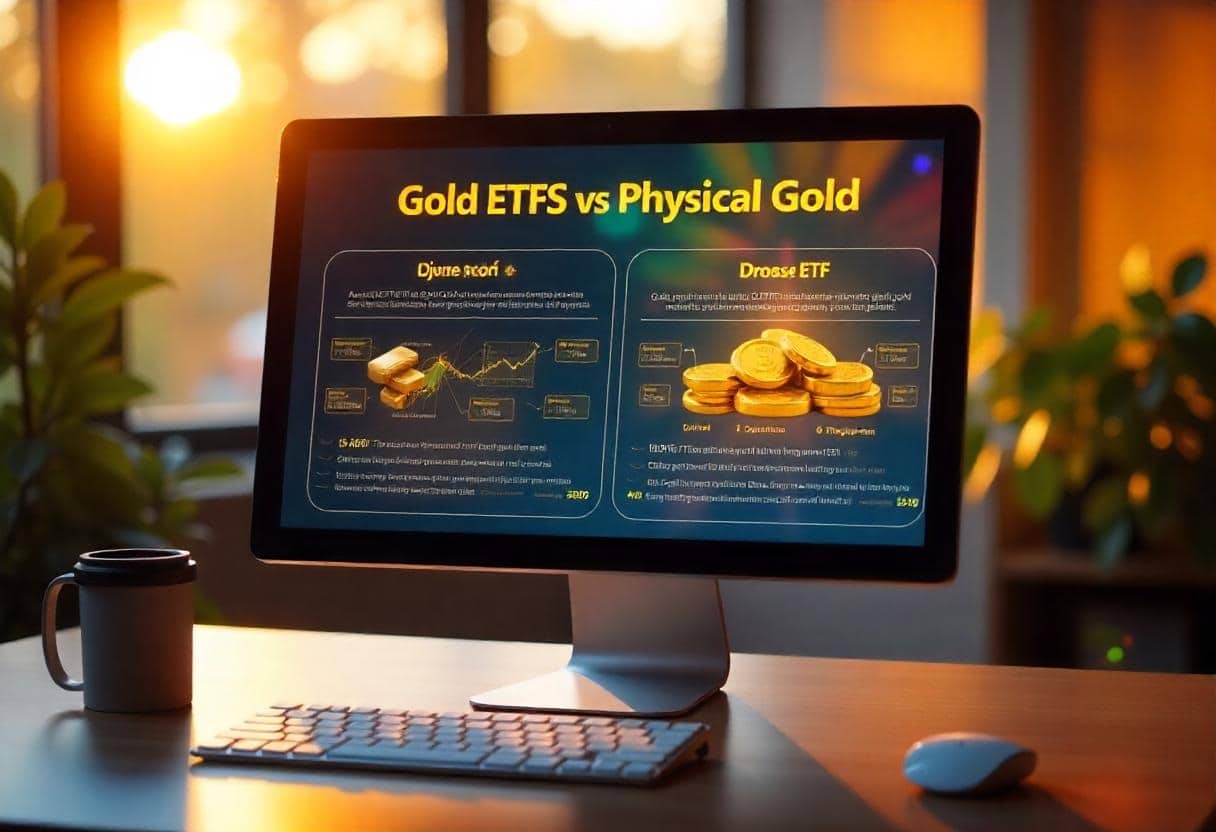Recently, there has been growing speculation that the U.S. dollar is on the brink of a significant decline and could potentially lose its status as the world’s dominant reserve currency.
The concept of “de-dollarization”—a shift away from the U.S. dollar as the primary currency for global trade and investment—has become a prominent topic in financial discussions. Many investors gradually diversify their portfolios adding precious metals or cryptocurrencies. Here you will find a complete guide how to invest in gold, the most valuable commodity in human history.
Read further to learn:
- Is US Dollar at risk?
- Most popular gold investments for beginners.
- How to get started today?
- Is gold investment right for you?
What Are The Chances Of US Dollar Collapse?
There is a growing demand for non-traditional reserve currencies, especially the Chinese yuan. The dollar’s percentage of global foreign exchange reserves fell from its peak in 2002 from 72% to 59% in 2023. On one side, China’s economy continues to expand. The Chinese government has begun conducting commodity trades in yuan with a select group of trading partners. Based on these developments, some argue that demand for the U.S. dollar could decrease, leading to a sharp drop in its value.
On the other side, while the global oil trade was almost entirely conducted in US dollars until recently, last year one-fifth of these transactions were denominated in other currencies.
However, there is little evidence to suggest that major foreign holders of U.S. dollars are preparing to abandon it suddenly, and there are currently few viable alternatives to replace it as the world’s reserve currency. In our view, a gradual transition toward a global economy where the dollar is less dominant remains a possibility over time.
Most likely the reason for a US Dollar collapse will be if Federal Reserve allows monetary inflation to grow out of control. The increasing money supply in the recent years resulted the highest inflation in the last 40 years. We may witness the possible downfall of the dollar as the global reserve currency if its devaluation persists.
How To Protect Your Money?
Investors can benefit over the long run by diversification of their investment portfolio. There are many investing opportunities but today we’ll focus on gold investments. Owning gold could be an effective hedge against dollar collapse. The weaker the dollar become; the stronger gold will be. It will help you to preserve your wealth and maintain purchasing power.
Popular Gold Investments
Here are the most popular gold investment opportunities:
- Owning physical gold coins, bars or even jewelry could be an effective hedge in case of dollar collapse. Unlike stocks or real estate, you do not need a middleman to buy gold. Moreover, gold and other precious metals are tangible assets with high liquidity, meaning they are relatively easy to sell, and you have full control what to do with them. Their universal value is maintained in US and any other country around the world.
The process of buying actual bars and coins is simple and allows you to purchase smaller amounts. But keep in mind that you’ll be also responsible for insurance, storage, and other recurring expenses, which can be costly.
Additionally, after a year of ownership, coins and bars are often assessed with heavy fees and taxes. In fact, they’re taxed at a maximum rate of 28%.
- Gold IRA. Precious metals IRAs allow you to buy gold that is controlled by you. Gold IRA offers multiple tax advantages. It also helps to protect your retirement savings from the volatility in financial markets. In Gold & Silver IRA post we go further in details of benefits and disadvantages of Gold IRA. Setting up self-directed gold IRA can be done easily, especially when you work with experts. Goldco is considered an industry leader company in precious metals.
- Precious metals certificates. You can invest in precious metal certificates without worrying about the hassle of storage. A bullion bank issues these ownership certificates, and the bank guarantees to swap the certificate for the actual precious metal upon request.
You will not be able to buy precious metal certificates in smaller amounts, though, and there is no assurance that you will get your entire investment back if the issuer were to go bankrupt.
- Gold Exchange-Traded Funds. Exchange-traded funds (ETFs) offer an alternative to direct ownership. It is a convenient and cost-effective way to invest in precious metals. An ETF is a pooled investment vehicle similar to a mutual fund, but with a key difference: ETFs typically track a specific asset (such as gold) and can be bought or sold on stock exchanges, just like regular stocks. You can purchase a fixed amount of gold in the form of shares, which can be traded through most brokerages just like regular stocks.
This approach is less risky than holding physical gold. ETFs generally trade at their net asset value and allow investors to purchase smaller dollar amounts. This makes it well-suited for smaller investors seeking a simple and relatively stable option for their money. However, unlike physical bullion, ETFs cannot be redeemed for tangible precious metals. Additionally, ETFs typically incur lower fees compared to other gold investment methods. Similar to physical bullion, they are subject to a 28% tax rate if held for more than one year.
ETFs can be a valuable addition to your portfolio. However, the returns from this type of investment may not satisfy those seeking more aggressive or high-yield opportunities.
- Gold Mutual Funds. Gold mutual funds are a type of investment managed by an external company, allowing investors to pool their money into a collective fund. The fund’s management team decides how to invest the pooled assets, often distributing profits back to investors through dividends as the investments perform well.
These funds can include investments in gold bullion or gold-related companies, offering an appealing option for individuals who prefer not to manage the direct purchase of gold themselves. Gold mutual funds are typically low-cost and often have minimal investment requirements, making them an attractive choice for investors who want a safer alternative to riskier assets like stocks.
Mutual funds are generally considered a low-risk investment option that can provide consistent returns. Aa result, investments in gold mutual funds can offer diversification benefits, especially for those seeking alternatives to traditional stock and bond markets.
Investing in gold and other precious metals is often viewed as a conservative strategy. For individuals looking to include gold in their portfolios without engaging directly in gold mining or purchasing physical bullion, shares in gold mutual funds can be an excellent way to participate in the market while spreading risk.
Is Gold the Right Investment for You?
Investing in gold, silver, and other precious metals can be an effective way to diversify your portfolio and protect you against inflation. These tangible assets also provide the advantage of liquidity, allowing you to convert them into cash when needed.
Beyond purchasing gold bars or coins, there are numerous ways to invest in gold, such as through gold IRAs, ETFs, and certificates. However, it’s important to consider that these options often come with markups and may be subject to taxes upon sale.
As long as you account for these extra expenses, gold and other precious metals can be a valuable addition to your investment strategy, offering stability and potential returns in uncertain economic times.


































